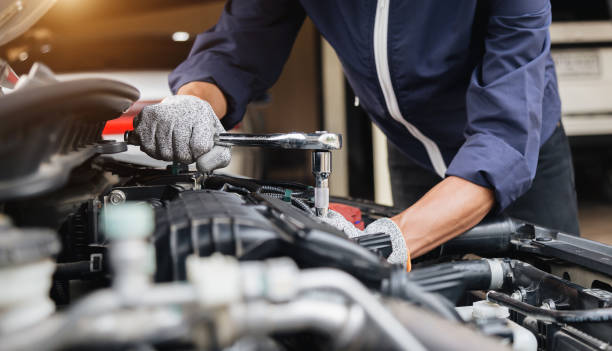
The second panel session of the day saw some of leading technological minds come together to discuss how technology is fundamentally changing motor finance, and what companies can expect to come in the future
The panel speakers were:
- Chair: Jonathan Minter, editor, Motor Finance
- Ofer Friedman, vice-president marketing, AU10TIX
- Shaun Harris, sales director, Codeweavers
- Graeme Banister, director of consulting, mobility, Frost & Sullivan
- David Webber, managing director, Intelligent Environments
Minter: What tech innovation has most excited you this year?
Harris: For me it would be the advent of multi-channel retailing. I’m a bit torn because I’ve got two favourites. Having looked at BMW’s BuyItNow, it’s a hugely exciting move for the UK marketplace. The fact is that this year we are truly moving towards the ability to retail cars online, and having people to do the entire journey there. So that product is hugely significant for the way the industry is going to move forward.
Banister: Visa is doing a partnership with Docusign, which is bringing the vehicle payment into the car. Also, AutoFi is an American company which is looking at bringing car finance completely online, and taking everything else from it. They’re going to tap institutional investors because there’s a lot of liquidity, and lots of people who want to break into the motor finance market.
Webber: In Finland there’s a mobility as a service proposition, which just got funding which will go across all types, not just motor vehicles, for one set of regular payments. These are the types of mobility innovations which could really spread into urban and semi-open areas.
How well do you really know your competitors?
Access the most comprehensive Company Profiles on the market, powered by GlobalData. Save hours of research. Gain competitive edge.

Thank you!
Your download email will arrive shortly
Not ready to buy yet? Download a free sample
We are confident about the unique quality of our Company Profiles. However, we want you to make the most beneficial decision for your business, so we offer a free sample that you can download by submitting the below form
By GlobalDataFriedman: The future is one-click secure customer on-boarding, and breaking the walls between operations and risk. Operating efficiently and securely is already happening, and will happen more often.
Does bringing finance online increase the chance of fraud?
Harris: Without the technology that’s coming in, you could say that. But one of the great things about technology is that where there’s risk, you can generally find the technology to overcome it. There are going to be things we learn as we go, and there will be further technical enhancements that will come in as the market develops. This means an awful lot of focus is going to go into that sector and that journey. So technology will be out there to cope with that as we see it.
Are there any technologies in others markets which you think could be brought over to motor finance?
Webber: A lot of the language I hear people use is very different to the language in the retail banking sector. There’s lots of use of the word ‘online’ and I think if you’re talking about online, you’re catching up with a curve that was almost old-hat three years ago in the UK. It’s got to be mobile consideration now.
There’s a danger that organisations try and copy their practices which worked for them in a face-to-face or telephone-based world, ignoring capabilities which should be built into their mobile solution.
Where should a company start looking in order to create an information centric centre?
Banister: Everybody gets it now; everybody needs to move in this direction. Look at this and think it’s like eating an elephant – you need to do it in bits; if you do in one go you’re going to struggle.
A good idea is looking to reduce duplications. How can you streamline your organisation to make it easier? Think about it from the perspective of the customer. It takes time, there’s no magic bullet or one-size-fits-all solution. How does it work for your organisation?
How do you break it down? How do you ensure you’re getting the right customer journey? You get that by asking your customers.
Sometimes we see companies look at customer acquisition and fraud prevention as two different parts of the business. Will technology change this?
Friedman: Almost by definition it will. If we can accelerate your customer on-boarding and save or improve your back office operation, then by definition this now translates into money. So technology forces, or remoulds processes in companies whereby heads of X and Y become bound to the same technology.
How can digital technology help improve affordability?
Webber: Part of our proposition as a business is we operate across financial services. That includes debt collection, which in the UK includes forbearance and the ability to take the right approach with regards to income and expenditure. From a software perspective, if you have to do that over the phone or face to face, that can be a 35-40 minute interview. The idea is because we believe in mobile online and think a lot of the acquisition can be done online, we think self-service and doing that prior to a credit decision process, or prior to a collections process, is going to be absolutely key.
Friedman: There is a lot of talk of the Revised Directive on Payment Services (PSD2), which will give you more access to the financial capability of a person, automatically. So following the authentication process, you’re probably going to be able to verify the person’s ability beyond what credit rating agencies are giving you.
Webber: I think a lot of people are talking of PSD2 as a golden bullet, and I don’t think it will be. The challenges of integration, data consistency, and multiple data sources and so on will still exist. Many of the promises people believe will come out of PSD2 will not come to pass. I’m happy to be wrong, because if I am it will create more opportunities, but I don’t quite believe.
Friedman: It’s a yes and no. There are a finite number of resources to check a person. At any given time, according to the data I have, even the biggest players in the market are up to 25-30% either missing a digital footprint, or it’s not updated. A huge chunk of the market is not checkable, in terms of such data. So do you leave them out of financing?
It’s what was said about multi-factor checking will eventually enable you to extend the borders of your effective audience. Whether there is data or whether there isn’t data.
Currently we insure the vehicle, and not the person. How much do you think the insurance sector is at a pace with mobility, and what does it need to do to enable it to happen?
Banister: They’re getting there. Telematics is critical to this, and insurers have been playing with telematics for quite some time, to effectively help the inexperienced young drivers actually afford a car.
Many P2P car sharing companies are owned by insurers. They all recognise that this is where they need to be going. They’ve woken up to this market which has been created. This whole concept is changing, and is going to transform how insurance is delivered fundamentally.
Could car sharing deconstruct loyalty to particular car manufacturers?
Banister: I think car sharing will naturally lend itself towards premium vehicles, because if you’re only going to use vehicles occasionally, you probably want to use something premium. But each person is diferent. It’s about looking at the mobility spectrum, and saying I need to go A to B, I’ve got a cost parameter, a time parameter and a sustainability parameter, what is most important to me? I think this is a key piece which the industry is missing.
Manufacturers are building telematics into cars in the manufacturing process. If that technology is already built into cars, how can finance companies access that information?
Banister: Many of the manufacturers putting the tech into cars will want to ring-fence it, so only they can use it. I think there will have to be a point in time where the data is shared. That’s where the most value will be created. If all of the people who are part of the mobility space get together and say ‘we all need to use this data’, it will make the ecosystem more valuable, and more efficient for the person using it. There still needs to be this conversation.
Mobile is where it’s at. Once you’ve connected with a car in a mobile capacity, that connects with your car when you’re in the car, and helps you in your journey when you’re out of it.
It’s also not just a case of getting hold of the data, it’s what you do with it. People are saying they don’t want telematics in their cars, so you’ve got to make it valuable for them.
You’ve got to make them appreciate why the telematics is in there. It improves their driving behaviour, it might save them insurance, and so on.
Are you expecting the move towards private lease to be gradual or explosive?
Banister: Just look at some markets. The markets for private leases in the Netherlands have been doubling every year. They expect that to continue.
There are challenges in the UK because PCP is so dominant. I do question the dominance of PCP and if it gives the right value to the customer. If a customer is looking for usage, PCP is kind of usage.
I expect PCH to grow, to grow fast, but I don’t expect it to be explosive. There are less mature markets across Europe and the world where the traditional pattern of going from outright purchase, to finance lease, to operating lease, is seeing a leapfrogging. Central and Eastern Europe are going from outright purchase to operating lease, for example.
David, what can motor finance companies do to drive digital adoption?
Webber: The important thing is there shouldn’t be any differentiation between channels. It can be very confusing for a customer if they are dealing with different parts of what they perceive is the same organisation.
The simple thing with digital is to experiment early, have an iterative cycle of improvement and feedback. Understanding what the customer wants to get from the solution, and give them a reason to continue to engage.
For example, I bought my wife a new car the other day. It’s still got a fat handbook. I don’t know why the app they have given me hasn’t got ‘how to’ videos on it, or the ability to do some augmented reality. This is all engagement, and this can get usage. Getting usage is about changing the thinking; it’s about not having a marketing function in one part of the business and a technology department in another; it’s about holistically understanding how you get people to download this and continue to access it.






